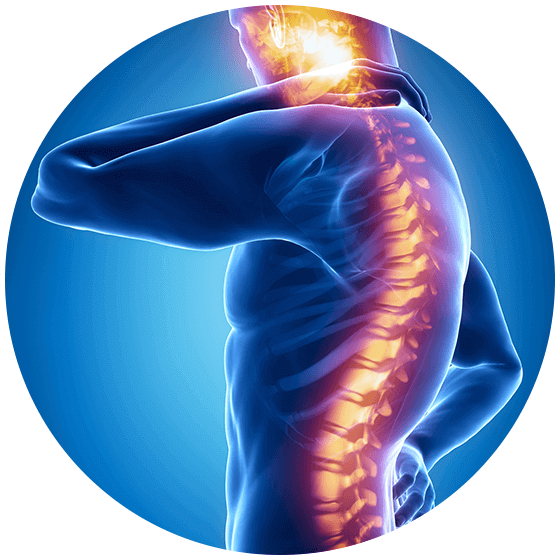Back & Neck Pain

Back & Neck Pain Symptoms & Treatment Options
According to the National Institute of Health, over 80% of adults will experience back pain at some point during their lifetimes. Furthermore, we can attribute more call-outs and lost productivity at work to back pain than to any other physical disability. Even worse still, back pain can force you to squander time with your family and prevent you from enjoying life.
Like a snowball rolling down a hill, physical symptoms can accumulate and evolve into unemployment, anxiety, depression, and isolation. And we all know that these sociological and mental consequences are not usually the elements of a happy, productive life.
Back pain can range from a mild soreness to an incapacitating, searing pain. The location and nature of back pain can also vary widely from person to person. Variables such as genetics, age, occupation, and lifestyle contribute to the unique set of circumstances that cause back pain. Moreover, many different conditions can arise, which will require highly specialized treatment. Your surgeon may need to replace damaged intervertebral discs, fuse unstable vertebrae, or remove bone spurs. Whatever the source of your back pain, you can rest assured that Advanced Spine will deliver effective, customized solutions.
Major Types of Back & Neck Pain
Because of the endless circumstances that lead to back pain, spinal problems can present themselves in a variety of ways. Specifically, two of the most common locations for chronic back pain include the lower back and the neck.
Lower Back Pain
Neck Pain
The lumbar spine, more commonly referred to as the lower back, is exceedingly susceptible to injury, degeneration, and pain. In particular, your lumbar spine supports a majority of the body’s weight and movement, making it especially vulnerable to injury. Conditions such as spondylolisthesis, bulging or herniated discs, and spinal stenosis only serve to antagonize an already achy spine. Symptoms can include mild to severe localized pain, radiating pain down the legs, and tingling or stiffness in the low back.
Our neck is the most flexible and mobile of section of our spine. Formally referred to as the cervical spine, our neck supports our head and allows for its movement. Furthermore, our head moves in a variety of directions that assist us in our everyday life. And, because we use it so much, our neck can easily become damaged with aging, overuse, or trauma. Common conditions that plague the neck include damaged discs, spinal stenosis, spondylolisthesis, and whiplash. General symptoms include pain, numbness, and immobility.
When Back & Neck Pain Becomes A Problem
Unfortunately, everyone will experience minor back pain as a part of everyday life. Whether you slept in an awkward position, pushed it a little too hard at the gym, or awkwardly lifted that box, back pain will inevitably occur. However, given rest and time, many instances of back pain will heal naturally. Yet for a select few, chronic back pain will necessitate medical evaluation.
If your back pain becomes progressively worse or limits your functioning, seek the advice of a board-certified physician. If symptoms such as radiating pain, numbness, or immobility accompany your pain, your condition may be more serious. Don’t hesitate to request a second opinion.
In the midst of all this talk of pain and incapacitation, there is some good news. Modern medicine has developed a multitude of exciting treatment possibilities and minimally invasive interventions. Depending on the source and intensity of your back pain, you may benefit from one of the following treatment options: